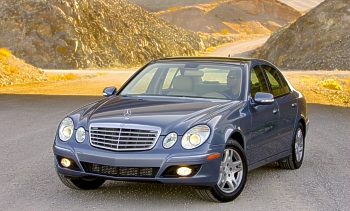
September 13, 2006
This Week:
-
Michael Schumacher will retire from race driving at the end of the 2006 World Championship
-
With the E 320 BLUETEC, Mercedes-Benz is launching a new era in diesel technology the USA
-
Exciting Chevrolet study WTCC Ultra celebrates world premiere
-
Citroen’s C-Metisse Concept Car – High Performance with an Environmentally-friendly twist
© 1998 - 2006
Copyright &
Disclaimer
Automotive Intelligence,
www.autointell.com
All Rights Reserved .
For questions please contact
editor@autointell.net
|
With the E 320 BLUETEC, Mercedes-Benz is launching a new era in diesel technology the USA
Spiralling fuel prices have also increased the demand for economical, clean cars in the USA. Mercedes-Benz is launching the new E 320 BLUETEC on October 15, timed to coincide with the introduction of low-sulphur diesel fuel in the USA. This model is also one of the most economical vehicles in its class and is regarded by experts as the pioneer of a new diesel era.
Ultra-modern diesel vehicles provide their owners with assured, clean and economical driving pleasure and can potentially – given a sufficiently large uptake – make national economies less dependent on oil imports. An EPA study dating back to 2004 confirmed the enormous potential savings inherent in diesel. Margo Oge, Director of the Office of Transportation and Air Quality, came up with the following calculation: if just a third of the light-duty vehicles in the USA were state-of-the-art diesel vehicles, we would be looking at saving 1.4 million barrels a day, the equivalent quantity of oil the USA imports from Saudi Arabia every day. |
|
With no end in sight to soaring fuel prices, experts predict a greater uptake of diesel around the globe. The recent J.D. Power study “Global Outlook For Diesel” forecasts that the current global diesel market share of 18 percent is set to reach around 30 percent in 2015: diesel vehicles are expected to account for over 15 percent of new registrations in North America.
Additional BLUETEC models in the USA and Europe by 2008
|
|
Against this background, Mercedes-Benz intends to systematically broaden its BLUETEC portfolio. Dr Weber: “In addition to the E 320 BLUETEC we aim to have another three BLUETEC models in the line-up as early as 2008 that meet the 50-state BIN 5 standard in the R-Class, ML-Class and the GL Class.” Following its launch in the USA, Mercedes-Benz intends to successively roll out BLUETEC in other markets. At present the technology is being adapted to European market requirements and other Mercedes Benz models. |
The company’s European customers should have the option of BLUETEC in a passenger car by 2008 at the very latest. Meanwhile the Jeep Grand Cherokee BLUETEC concept is a perfect example of how other DaimlerChrysler brands can also leverage BLUETEC.
BLUETEC is a modular emission control system that reduces nitrogen oxides. Diesel engine design means nitrogen oxide is currently the only emissions constituent that exceeds the equivalent figure for a petrol unit. Mercedes-Benz has developed BLUETEC in two versions: in the E-Class an oxidation-type catalytic converter and particulate filter are combined with an improved, extremely durable NOx trap system and an additional SCR catalytic converter. The second BLUETEC version is even more efficient. Here, AdBlue, a non-toxic aqueous solution, is injected into the exhaust-gas stream, causing ammonia to be released. In the downstream SCR catalytic converter the ammonia then converts up to 80 percent of the nitrogen oxides into the harmless natural products of nitrogen and water. The specific vehicle concept and weight as well as the deNOx requirements determine which BLUETEC system is used. In principle, BLUETEC is capable of meeting the world’s most stringent exhaust emission standards.
(September 12, 2006)
| .
Homepage News Companies Management Publications Events Guestbook Search . |
